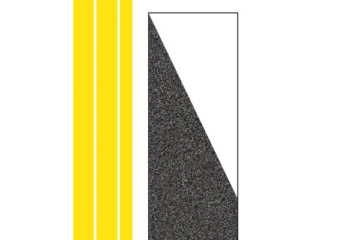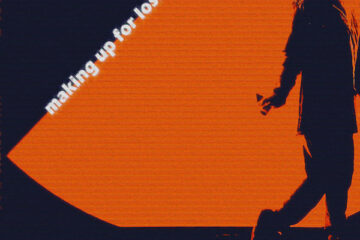Revisiting an electronica classic…
Jean-Michel Jarre’s anticipated follow-up album to his 1976 opus Oxygene arrived in 1978. Titled Equinoxe, the new album managed to avoid sounding merely like a retread of Jarre’s groundbreaking album, instead presenting a subtle evolution of the layered sound palette that Jarre enjoyed at the time.
As ever, Jarre showed a mastery of crafting evocative soundscapes, often from using some very basic kit. Equinoxe managed to paint moods and moments that to this day have a timeless quality to them. As with the former album, Equinoxe also had one movement that could be pulled from the album as a single. In this case, the electropop melodies of ‘Equinoxe Part 5’, whose bright tones and multi-layered synth effects resulted in a composition that sounded both dynamic and inspiring.
Jarre’s latest studio album release Equinoxe Infinity acts as a sequel to the original Equinoxe album, marking 40 years since the original was released. Taking its themes from Michael Granger’s distinctive artwork from the 1978 album (Granger also produced the iconic sleeve design for Oxygene), the new album revolves around the idea of cryptic ‘watchers’, which lends a concept album idea to Equinoxe Infinity.
Infinity also differs from Jarre’s classic electronica albums in the fact that although the album is divided into movements, each movement has been given a title.
“I started for the first time with the album cover not the music” comments Jarre on his new outing, “I still think that Michael Granger who did the original Equinoxe cover created one of the best album covers of all time. For the original it was all about the watchers. These strange creatures watching us? Watching Space? Watching machines? Watching a natural phenomenon ? We don’t really know… they are not scary, but odd and mysterious.”
These themes are also reflected in the sleeve artwork – and seem to throw a nod to Oxygene’s sleeve art at the same time. The 1976 album concept (showing a skull beneath the Earth) seemed to capture environmental concerns in a single image. On Equinoxe Infinity, Jarre plays with possible futures: “One cover shows mankind in peace with nature and technology and the other depicts a picture of fear and distortion with machines taking over the world.”
This isn’t the first time that Jarre has revisited classic albums. He continued the theme of his 1976 album for the impressive Oxygene 7-13, released in 1997 (an album followed by the somewhat less impressive Oxygene 3 in 2016).
Given Jarre’s impressive heritage, how does Equinoxe Infinity shape up as an album in 2018? On the whole, it’s a polished collection of electronica that even diehard Jarre fans are going to find little to quibble about.
‘The Watchers (Movement 1)’ presents suitably widescreen electronica which serves as the perfect opener for the album. The dramatic flourishes call to mind fellow electronic artist Vangelis at points, something echoed on ‘Flying Totems (Movement 2)’, but it still retains Jarre’s talent for layering sounds to present electronic music with an emotional punch. “I love the idea that technology can provide emotion” commented Jarre recently, “even though technology is not linked to the notion that it can actually provide emotion.”
BUY NOW
‘Robots Don’t Cry (Movement 3)’ features familiar rhythmic beats along with a reedy synth melody. It sees Jarre utilising the Mellotron once again on a piece that was apparently all recorded in one go. Meanwhile, ‘All That You Leave Behind (Movement 4)’ seems to evoke an Ennio Morricone soundtrack vibe.
Equinoxe played around with natural sound effects, an idea revisited here on ‘If the Wind Could Speak (Movement 5)’. It’s perhaps the track that harkens back to the original Equinoxe the most. A mesmerising sampled vocal element also lends the composition a warm, human factor.
As with the classic Jarre albums, Infinity boasts one track that serves as the most obvious chart-friendly number. In this case, it’s ‘Infinity (Movement 6)’, which again crafts its melody around sampled vocal elements to deliver a striking electropop outing.
‘Machines Are Learning (Movement 7)’, with its burbling synth tones, is another track that throws a nod back to Jarre’s traditional sound style.

Earlier this year, Jarre had released Planet Jarre, an album that sought to encapsulate the electronic musician’s extensive career. As an introduction to Jarre’s music, it served its purpose well, although some of the remastered tracks and edits sounded a little odd to fans used to the album cuts (‘Magnetic Fields, Pt. 2’ in particular).
Those familiar with that compilation will also spot ‘Coachella Opening’ reimagined as ‘The Opening (Movement 8)’ here. The composition had originally been penned as a piece that served as an opening number for Jarre’s live appearances. The studio version gives it a more rounded feel with a superb use of dynamic melody and a nice slow build-up.
‘Don’t Look Back (Movement 9)’ opts for a simpler arrangement, with synth strings providing an insistent melody while more restrained electronic elements flit in and out.
The album’s title track closes proceedings with a suitably downbeat composition. There’s a more gentle, ambient aspect to this track built around lush synth beds and a hypnotic melody. Slotted in between are little motifs culled from some of the other tracks on the album.
Equinoxe Infinity is a testament to Jean-Michel Jarre’s continuing talent for crafting emotive electronica and demonstrates that the French musician still has that magic touch.
Equinoxe Infinity is out now.










